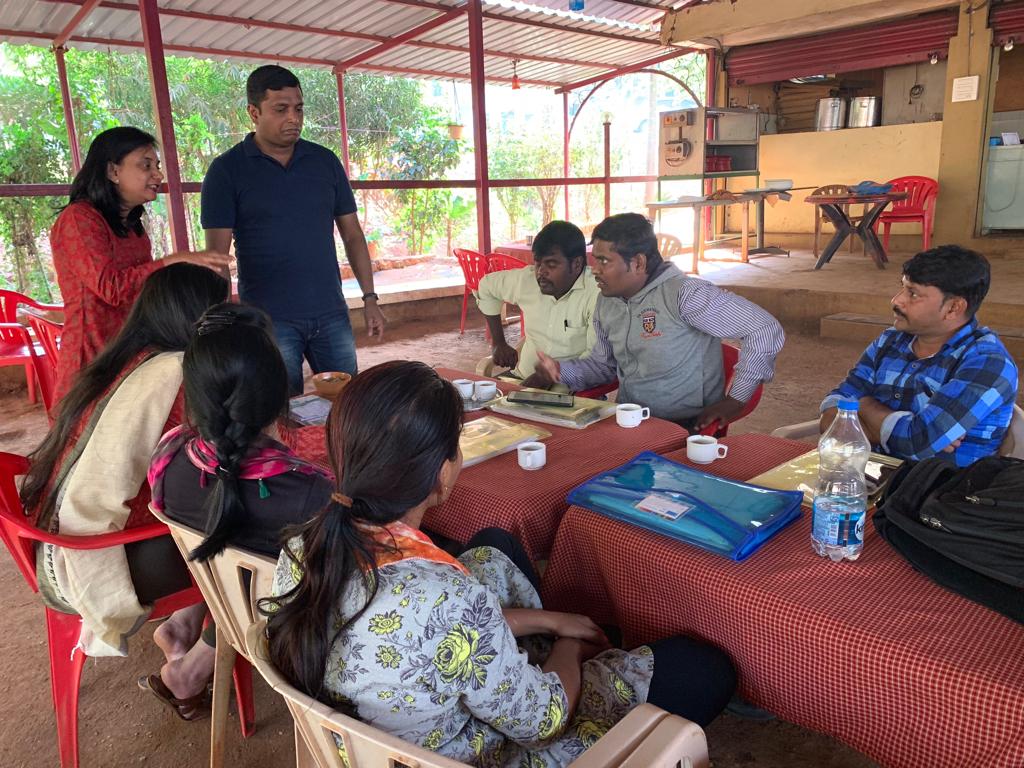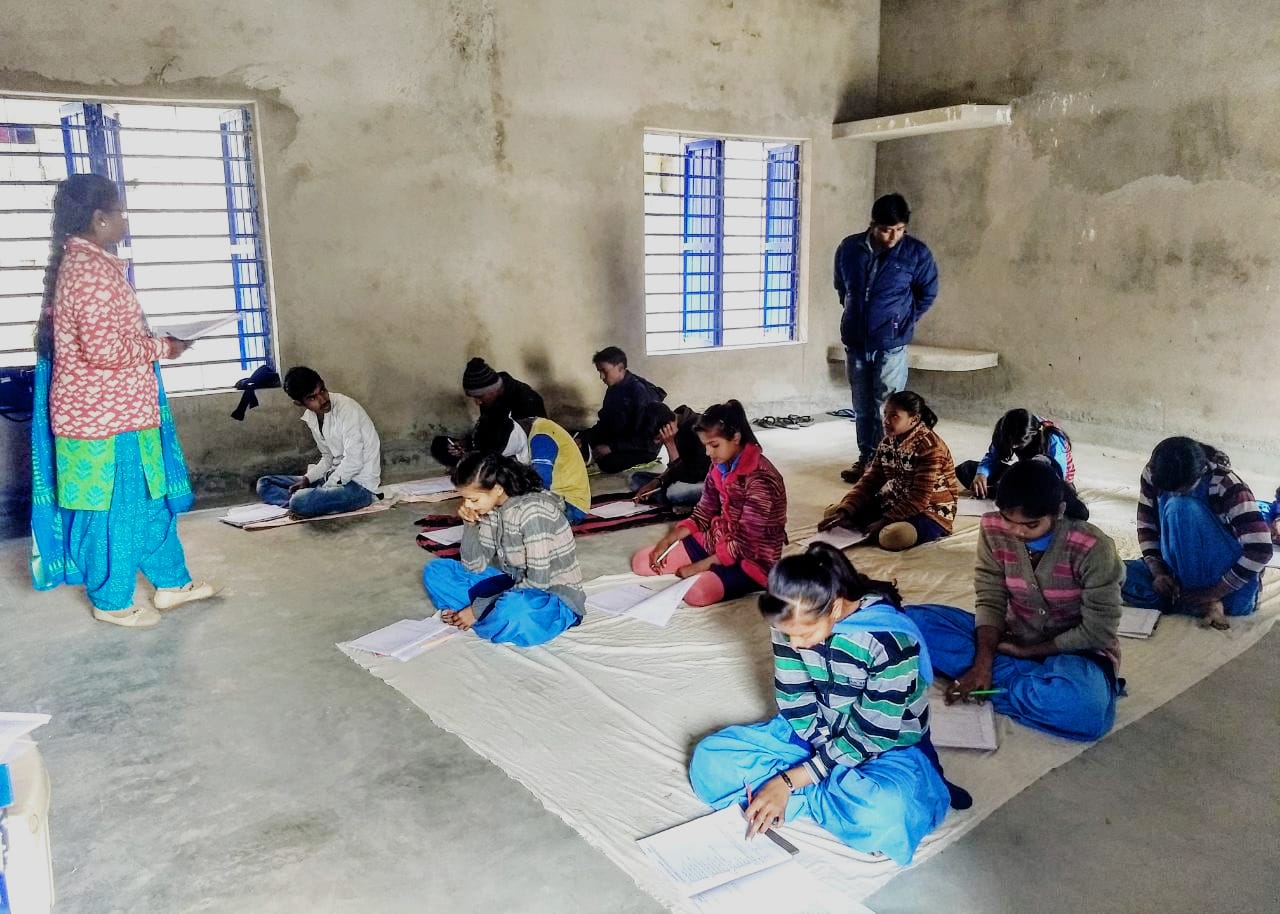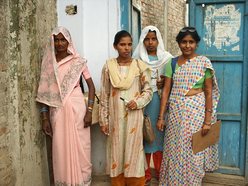Blogs

COVID-19: IS THE PANDEMIC ENABLING AN INFODEMIC?
This blog covers the influence of social media on the current pandemic, Covid-19, the ethical and moral responsibility of social media and guidelines to elude fake information.
As it is rightly said, “With great power comes great responsibility.”
Today this great responsibility lies in the hands of social media. Social media has impacted all facets of our lives. It has influenced the way we think, eat, drink, and travel. It has long taken over the print media. According to Statista, as of 2020, India, with around 280 million Indian users, is the largest Facebook user base in the world. The overall share of Indian population that has access to social media is growing and is expected to be around 31% by 2023 with around 450 million social media users. The power of social media is such that even the Prime Minister, Mr. Narendra Modi has turned to it to disseminate important information. Be it his constant reminders of keeping safe during the pandemic or the information about the development of the vaccine, Mr. Modi has always taken the aid of twitter.
Social media has come to the rescue of the governments of various countries for distributing information to large number of stakeholders. The Indonesian government agencies used Twitter to convey early warning communications with people during the 2012 Tsunami. The United States government officials used Twitter during the 2012 Hurricane Sandy crisis to involve people in the creation of public services.
But it is not all merry stories. Because of its popularity it is also a major source of spreading misinformation. According to a study conducted at MIT, false news stories are 70% more likely to be retweeted than true stories and true stories take about six times as long to reach about 1,500 people as does the false information to the same number of people. An example of misinformation is that in 2014, during the Ebola outbreak there were a number of tweets stating that the cases increased to 6,000 per minute and that the virus spread through water and food, which led to panic amongst people. It happened when there were only few cases in Newark, Miami and Washington DC.
Now a new novel coronavirus (COVID-19) has spread to almost all the countries of the world and has become a pandemic. The number of cases are rising every day.
Global new cases everyday
*Graph from New York Times
The stark difference between this pandemic and many before can largely be attributed to the presence of social media. Every person at each time is aware of the number of positive cases in each and every district. The source of information is sometimes validated while sometimes it is a complete faux. Soon after the world got used to the term covid-19, the WHO coined another, more deadly, term “Infodemic”. It is the rapid spread of deceptive or counterfeited news spread through various channels like, Facebook, Instagram, Twitter and many more. This avalanche of misinformation is highly contagious like the virus and what more, even more deadlier than the virus itself. Covid-19, or corona (as it is commonly called) is, in fact, the first social media pandemic.
Basch et al. in a study (5th March 2020) revealed that the 100 most viewed videos (together comprising 165 million views) on YouTube related to the word “coronavirus” and found that 85% of them were news videos. The study found that 90% comments were related to deaths, anxiety and quarantine status. Less than half of them mentioned most frequent symptoms and less than one third mentioned the recommended preventive steps.
In India the situation is far more complex. There is a huge gap amongst people who have access to social media and can use it to spread information and fabricated news and people who don’t even have access to basic internet. According to the Telecom Regulatory Authority of India, there were about 34 internet subscribers per 100 people in India in 2017, which grew by 20% in just two years. Now in 2020, India is the second largest online market in the world, second to only China. But this internet connectivity is not evenly distributed. As with most of the modern facilities, here too, urban rural divide exists. According to CSC e-Governance Services India Ltd, only 290 million of the 600 million people are from rural areas. The internet density in rural India, which accounts for 66% of the total population, is only 5% whereas, for the urban India (which accounts for 34% of the total population), it is a whopping 98%! Also, there are far more male users as compared to the female users. This gender divide deepens as we go further in the rural heartlands.
According to a survey conducted by Hammerkopf Consumer Survey, there was an 87% increase in social media usage during the lockdown in India. Cyberchondria and information overload were observed from excessive internet use during COVID-19 pandemic. Cyberchondria is the fanatical online searching for health related information, usually for specific symptoms. It is the result of cyberchondria and information overload, that human cognitive reasoning is impaired and hence, people are more likely to believe in the fabricated news. The lack of digital literacy in India poses yet another problem. People are far more easily convinced with the fake news. This fake news is almost always accompanied by a physician, nurse, health care worker or any person of authority spelling out the “advice”, example, holding the breath as a test for covid-19 or taking excess vitamins to prevent the infection. Misinformation on Facebook regarding the medicine, example hydro chloroquine to treat Covid-19 resulted in the inadequacy of the medicine in the market because of general public hoarding the same. In India, social media was also responsible for polarizing people against Delhi’s Tabligi Jammat markaz.
But there are also a few wonderful examples where social media has come as a godsend for some people in times of pandemic. A video on the plight of an octogenarian couple whose food stall suffered the wrath of the lockdown and had no visitors went viral on social media. In a matter of 5 days, the video got 30 million views on Instagram and 50 million views on Facebook. The “Baba ka Dhaba” is now not only supported by the crowd but is also sponsored by some leading brands such as Zomato and Pepsi. In another example, a Bengaluru based man turned his domestic help “Saroj Didi” into an internet star in a bid to set up her food delivery business. The Bengaluru based man turned to twitter posting about the “didi’s” exceptional culinary gift and in no time orders came pouring in. All this thanks to social media.
The above examples prove that social media can be really helpful, provided we use some caution. Some guidelines are recommended (Chan et al) for responsible use of social media for disseminating information. The first and foremost being that you should always provide the source of information. You should refrain from sharing information from a suspicious source and also information that may only induce panic. The information should always be distributed through established professional platforms. Social media analytics should help government authorities to exchange and comment on real-time information about ongoing infectious disease threats. The development of a real time information sharing system, monitored by government officials can also go a long way in curbing the propagation of fabricated news. At last, nothing works better than an effective communication between the citizen and public health officials through social media.
To sum up, social media can act as a boon and a bane, the choice lies with us.
 Outlineindia
Outlineindia- 12 October, 2023

COLLECTIVE SOCIAL RESILIENCE IN TIMES OF PANDEMIC
This blog covers how the social sector has played a pro-active role in relief work across the country since the onset of the novel coronavirus and highlights the challenges, the need for adapting to the new normal, and how there is an increased degree of cohesion among organisations working in the developmental sector.
The novel coronavirus has impacted every facet of our lives in ways that has forced homo sapiens to come up with innovative solutions. Collaboration and resilience were seen as important tools to cope up with this crisis. Strict lockdown and quarantine measures were considered imperative to curb the spread of the virus resulting in a complete disruption of the existing social order. Even though the pandemic has largely impacted the lives of people belonging from different strata of the society, however, some sections like the migrant workers, poor, destitute, and the vulnerable have been affected a little more than others. As the lockdown kicked in, the daily wage workers, migrant labourers were immediately cut off from their sources of income and had to lose their livelihoods. This sheds light on the humanitarian aspect of the society wherein people came together and helped the ones in need. The Private bodies-through CSR initiatives along with the Central and State governments routed funds for immediate relief work.
The social sector was seen to actively take part in fund raising and supplementing the government’s efforts across the country to mitigate the ravages caused by the coronavirus. Organisations were and are still continuing to distribute food, hygiene kits, monetary help, crucial information, transportation facilities to vulnerable and marginalised population like migrant workers, sex workers, waste pickers families and daily wage workers.
On one end while the social sector was receiving accolades by Amitabh Kant, CEO of NITI Aayog for their contribution to aiding COVID-relief in the country, on the other hand this pandemic adversely impacted them on several fronts, threatening their capacities and sustainability . ‘The Impact of COVID-19 on India’s Nonprofit organisations’ report by the Centre for Social Impact and Philanthropy (CSIP) which is based on in-depth interviews with 50 leaders of non-profits, highlights some of the core issues challenging the non-profit segment of the social sector.
While 76% of the non-profits surveyed are engaged in relief work, only 70% have received additional funding specific to COVID-19. Given that the funds from CSR and philanthropy have been diverted towards work related to healthcare and other immediate relief, programmatic and operational strategies of non-profits is seen to have taken a back seat. They are lying low and are yet to restructure and revamp their programmes. A good amount of the social enterprises have revised their budgets downward by about 25%, expecting a sustained diversion of funds due to the pandemic. Only 16% of the respondents stated that they could cover current costs for more than a year.
A few organisations are encouraging employees to learn new skills including fundraising which has become a necessity during these times of crisis. The NPOs (Non-profit Organisations) and NGOs which are reliant on corporate bodies for receiving CSR funds are susceptible to face limitations in terms of securing funds for their initiatives. This is primarily because huge amounts of CSR funds which earlier was routed through organisations working at the grassroots level have now been directed towards the PM CARES Fund. On the other hand, non-profits dependent on international funders have received support and flexibility in terms of fund expenditure and decision making however, this may undergo certain limitations in case these unprecedented times continue to last in the future as well. This would have significant impact on the social development sector primarily because this sector heavily relies on in-person interventions necessitating human contact.
Even within the social development sector, industries that heavily depend on collecting data from the field or gauging the field realities are placed in an uncomfortable situation. COVID-19 has obstructed on-field surveys for months to come. The sudden lockdown has dismantled the pre-COVID mode of data collection methods and has urged people to adapt to new virtual ways of data collection. This has also resulted in operations being halted as many players lack the preparedness for the digital switch. This therefore also implies that ground-level data that facilitates decision making and policy formulation to aid the marginal and vulnerable communities also run the risk of being adversely impacted in the longer run.
Lockdowns and self-quarantine measures to contain the spread of COVID-19 implies that social researchers and data collectors who engage in fieldwork will have to switch to digital and remote data collection and research methods to continue their work. In the survey report, non-profits also stated the need to adopt digital technology to allow remote work and update their operations and programmes to digitise service delivery, so that the communities they are working for do not continue to be at a disadvantage. Therefore, there is a broader consensus among different players in the social development sector to use technology and switch to a digital mode of operation.
Much like the other sectors including IT, BPOs, and InfoTech industries social sector would also gradually use technology to continue their operation. As we move to a ‘new normal’ in the post-COVID world, research and data collection will also flow in a similar direction. Even though there is a debate around the feasibility and authenticity of the “data” collected through virtual means it is needless to say that the world order is open to accepting new changes and come up with innovative solutions to combat the situation at hand.
Faced with the dilemma of collecting reliable data without face-to-face interaction, digital and remote methods of data collection, and management like rapid surveys through mobile phones and SMS, Computer-assisted telephone interviewing (CATI) and Interactive Voice Response Survey (IVR) have been gaining ground among researchers and organisations.
While phone surveys allow for high-frequency data collection at a lower cost, they can pose challenges in terms of lack of verbal cues, establishing rapport, or problems when a person doesn’t own a phone. SMS surveys have also proved beneficial in terms of increasing response rates by sending reminders. Another limitation that remote surveys pose is an ethical aspect. More time needs to be dedicated over the phone in explaining the purpose of the survey and research project so that it is clear, and the respondents can give their consent.
Nonetheless, organisations are adapting their projects and programmes to the new digital ways while being aware of the limitations and trying to come up with ways to mitigate the shortcomings. We at Outline India have also started to transition to alternate modes of primary data collection. We have switched from in-person to virtual surveys including web surveys, email surveys, and phone surveys. We have also been using our tech tool Track Your Metrics to collect quick data from the field to inform the policymakers about the current situation, which has been extremely crucial especially in light of the current pandemic. This not only allows us to understand the ground realities but also aids in maintaining social distancing protocols outlined by the government.
Additionally, other players like ID insight have initiated a Data on Demand Initiative which offers remote/ mobile-phone-based data collection services to support COVID-19 response efforts. Innovation for Poverty Action has launched Research for Effective COVID-19 Responses, or RECOVR to generate rigorous evidence, advise governments, and to bring together partners across the research-to-policy sector to rapidly provide decision-makers with rigorous data and evidence to mitigate the impacts of the crisis. The World Economic Forum again has also launched a COVID Social Sector Mobilization Platforms to bring together leading organizations and actors from civil society, social innovators, and the philanthropic community to respond to the immediate crisis and shape the medium-term policy and action that will be needed post-crisis.
Contactless research is going to persist for the foreseeable future in the post-COVID world and the social sector must adapt and digitise to manifest these changes. As organisations innovate to mitigate the limitations of virtual surveys, it is crucial to remember the fundamentals of field research. Continuous communication with the field researchers should be maintained, social media must be strengthened, and funding sources must be diversified.
To sum up, it is interesting to note that with all its evils and shortcomings the pandemic has to a certain extent facilitated cooperation among different bodies and has elucidated the intertwined nature of our society at large. It has aided us in coming up with innovative solutions, adapt to virtual means of communication, and collectively combat crucial life problems. The pandemic highlights the importance and undaunted power of collective social resilience as we together as a community sail through this crisis.
 Outlineindia
Outlineindia- 12 October, 2023

DISSECTING THE IMPACT OF CORONAVIRUS ON RURAL EDUCATION IN INDIA
This blog aims to examine how coronavirus has affected the education sector in rural and urban India. Was the implementation of Education Policies strong enough in the first place, to have us questioning the added upheavals caused due to coronavirus? What are the consequences of lack of attention paid to rural education development, and how many we as Indians improve these in the long run?
There is nothing like a good crisis to shake up an industry. The coronavirus has stormed into our lives, altered our realities, and forced us to change for the better. Be it fashion, sports, hospitality, or banking, there is no arena where the coronavirus has not played its hand. The biggest and most important impact has been on our younger generation, the future of tomorrow. No one can deny that the pandemic has opened our eyes, to the need for major reformation of the education sector.
According to a recent article titled Education: From disruption to recovery by UNESCO (May 2020), nation-wide lockdowns are impacting over 70% of the worlds' student population. The report estimates that across 22 countries, over 290 million students shall be adversely impacted. UNESCO also estimates that about 32 crores of students are affected in India, including those in schools and colleges. The repercussions of the pandemic will continue to produce pronounced changes in teaching and learning practices for all levels of education. But how evenly will these issues be addressed across villages across India, is a matter of concern.
Urban-Rural divide
According to a survey report called the Annual Status of Education Report (ASER), more than 50% of the students in the 5th standard attending rural schools are not capable of reading a second standard textbook and do not to solve basic mathematical questions. As if there wasn’t enough disparity between urban and rural education in the first place, the coronavirus crisis has only further impacted our rural education system.
As per the Eighth All India School Education Survey of 30th September 2009, 13 lakh primary, upper primary, secondary, and higher secondary schools were identified across the country. Out of these, 84% of the schools were in rural areas, while the remaining 16% in urban areas. This fact eliminates the argument of a lesser number of schools existing in village areas. What it does highlight, however, is the gargantuan ineffectiveness of educational reforms in India- does the process stop at writing policies and making school buildings in villages? Even after 11 years of the RTE ACT of 2009, less than 12% of schools are RTE-compliant.
The problem to address here is the inefficient use of human capital, technology, and communication. Since our foundation was not strong in the first place, the stakeholders of rural education- students, teachers, and parents- have increased concerns in the lack of relief interventions to ensure the continuity of the learning process during the lockdown. The urgency to enact redressal has to be understood as schools are more than just learning centres for students from rural or poor strata. A school provides social protection, nutrition, health, and emotional support to the most disadvantaged, from low- to high-income. About 9.12 crore Indian children are not receiving their mid-day meal during school closure. These meals served as an important safety measure, as economists estimate that 75% of poor families’ income is spent on food.
National Sample Survey Office 2014-2015 data clearly shows economic factors as key to children dropping out of school. The pandemic and lockdown have impacted 14 lakh migrant workers as well as others working in the unorganised sector (90% of India’s population is engaged in unorganised work). In such a situation, blatant emphasis on technology-driven education will exclude many children in this country from continuing school education. Besides infrastructural challenges, India is a diverse and multilingual country. One nation, one channel, or one digital framework needs to be reconceptualised to ensure equity and quality in education.
Source: NCERT - 8TH AISES CONCISE REPORT
Challenges Faced
Rural schools face a number of challenges when it comes to the learning arena- enrolment and dropout of students, the number of teachers, infrastructural deficiencies, and technological barriers to name a few. One reason why urban schools are far ahead in the race is, due to the way of teaching and administration that differs. While the teaching methodology in rural schools is still primitive, urban schools have always been keen on adopting modern ways of teaching like concept learning and focus on the development of each student through holistic activities. This is complemented by regular interventions and audits by authorities, which becomes comparatively difficult when it comes to accessing villages in far off areas. The incomes and infrastructure in urban cities have enabled the easy introduction of e-learning modes, supplemented by the availability of devices and the internet, during the lockdown period. Inadequate access to facilities, drastic change in earnings, and the movement of families due to the economic shutdown have worsened the situation for rural learners.
A look at the recent emergencies in the country reveals the direct and indirect impacts of natural disasters on school education. Direct impacts include the destruction of school buildings and damage to roads connecting to schools, resulting in uncertainty of reopening and irregular attendance. Indirect impacts include long-term closure of a school due to temporary conversion of the school building to a rehabilitation centre, silent exclusion of children belonging to families in distress through displacement or migration, resulting in child labour, child marriage, and child trafficking.
The National Commission for Protection of Children Rights (NCPCR), which is the primary monitoring agency of the RTE Act 2009, has seen a huge s in the number of complaints it has redressed before the lockdown. In the previous year, the NCPCR addressed around 5,000 complaints; post-outbreak (beginning March 2020), this has increased about 8-fold. Lack of safe drinking water, toilets, hand-washing facility, electricity, and cramped classrooms means schools don’t have the prerequisites to reopen.
Along with this, contractual teachers across the country have also been hit, with no guarantee of future employment. In many states like Bihar and Delhi, were not receiving their salary for several months even before the pandemic broke out. Those who are willing to participate in COVID-relief operations are still having some stable income, but only momentarily.
Changing times call for changing measures
The crisis will prepare school systems to face such pandemics in the future more efficiently and without prolonged disruption, as well as move towards building a strong public education system in the country.
Shyam Kishore Singh Gandhi, the headmaster of a school in Jharkhand’s Dumka district, set an example for everyone, by conducting classes for his 200+ students over loudspeakers across the village. This move is to be lauded as the administration understood that students might be bereft of smartphones but still willing to learn amid lockdown. Such unique innovations and interventions pave the way for a better learning outcome. The coronavirus pandemic is teaching us how schooling is not equivalent to merely learning, but encompasses a social space, a social process, to learn to live, think and act for one’s self and the collective good.
 Outlineindia
Outlineindia- 12 October, 2023

UNDERSTANDING THE IMPACTS OF CORONAVIRUS THROUGH A GENDER LENS
 Outlineindia
Outlineindia- 12 October, 2023

ENSURING EFFECTIVE PHONE SURVEY: PROTOCOLS AND DO’S AND DON’TS
 Outlineindia
Outlineindia- 12 October, 2023

TRANSITIONING FROM CAPI TO CATI: A GUIDE TO ADAPT TO PHONE SURVEYS USING CATI IN UNPRECEDENTED TIMES LIKE COVID-19
How we can adopt new ways of data collection during the COVID-19 crisis? This blog focuses on Computer-Based Telephonic Interview (CATI) to optimize efficient and relevant data collection.
COVID-19 has changed the lives of people across the globe and has forced mankind to acclimatize themselves to the current worldwide crisis. The vulnerable sections of the society are being affected more than others. Since virus such as COVID-19 is likely to spread in overcrowded conditions/ poor hygiene pockets where there is little infrastructure or sparse resources to respond to it effectively. Hence, as we all grapple with our lives in this situation, it is important to keep an eye out for information of the communities who are vulnerable so that relief could be doled out on time.
Previously a key method to gain insights about vulnerable or communities at a disadvantageous position was by conducting field interventions with in-person interviews. However, the unprecedented times that we are in does not leave us with that choice. Hence, as a social enterprise and data collection firm, Outline India has been reflecting on its past experiences and has commenced transitioning to other modes of primary data collection. Since we still believe that raw numbers from the field are pivotal for data-centric informed decision making, more so in times like COVID-19.
In this article, we tried to put together our 8 years of field experience, possible issues on logistics and technological innovation to ease this transition. This article may contribute towards helping other data collection agencies, research organizations and donors to understand how we can still go ahead collecting quick data to keep up the momentum.
One of the most rational way of going ahead is transitioning from in-person to virtual surveys. This will ensure that we are able to maintain social distancing and still be able to gather some numbers. There are a couple of online survey techniques that are available like web surveys, email surveys, phone surveys so on and so forth.
Of the available remote sources, phone/ mobile surveys can be a good way of engaging with respondents. Mobile surveys can further, be categorized under 3 heads especially for administering it for low- and middle-income country research:
1. Computer-Assisted Telephone Interviewing (CATI), which consists of interviewer-administered phone surveys
2. Interactive Voice Response (IVR) surveys, automated voice surveys
3. Short Message Service (SMS) surveys that use text messaging.
CATI or Computer Assisted Telephone Interviewing is a telephone survey process wherein an electronic device (computer/tablet/mobile) displays questions on its screen and the interviewer reads them to a respondent over a phone call and directly enters the responses into the electronic device. It not only helps to establish a connection with the probable respondents but also provide a better chance of getting accurate information from the respondents.
Of the different modes, we suggest using a combined targeted approach to ensure data reliability and meeting the target sample size for a survey. Using CATI along with reminders over SMS can be an effective way forward. Using software, to track and manage the calls and data to be collected could be a good idea as it uniquely minimizes data entry and management hassles.
The broad set of activities to be undertaken by research organizations/ data collection firms include:
1. Identifying & accessing respondents: Obtaining a list of valid phone numbers to get started with the phone surveys is the first step in this process. However, this can be a tedious task. Designing studies around CATI could be beneficial for cases where contact details of the potential respondents from the previous round of data collection (either midline or endline) are available. However, if there is no such data available one can also procure lists of valid phone numbers from the telecom companies or private market research firms. However, these lists often need to be purchased or negotiated. This can prove to be time-consuming in a rapid response situation like COVID-19. The lists may not represent the entire population. Moreover, the lists obtained might not be representative of the entire target group.
2. Research objective: After procuring lists, it’s important to focus on the research design and objectives. As CATI would be a remote data collection technique, only priority objectives should make it to the final research variable sheet. In case there are multiple objectives, one can allow some time for ranking the objectives in terms of priority and focus on the most important ones.
3. Questionnaire design: Since the survey will be administered over the phone, the questionnaire should be short and crisp, prioritizing the most relevant questions. Ideal survey duration in CATI ranges between 8-10 minutes which can at max be stretched to15 minutes (based on project requirement).
Do keep in mind: 10 minutes is likely to translate into 20-30 questions in flat lay and all follow up questions should be counted as separate questions since it will also take some time for the enumerator to explain it to the respondent.
4. Training of enumerators: It is prudent to conduct elaborate enumerator training, developing easy to comprehend training materials for them. It could be helpful to create scripts, FAQs, call checklists for training.
5. CATI Software: As mentioned earlier, using software to manage data, collect data and track the overall progress of the study is a great way to keep things on track; especially in a time, when we are all working from home and are spread out across different locations. One such easy to use the software is SurveyCTO. This is also helpful for the organizations who have been using CAPI for data collection earlier. Using SurveyCTO makes the transition all the easier! The primary steps involve:
6. Combined Targeted Approach: Only making phone calls can result in low response rates. It can so happen that due to lack of prior information the target respondent is not available during the time of the call. Hence, sending SMS prior to making calls can be a good medium of informing respondents of the scheduled interview.
7. Things to remember:
o There is an important gender gap in mobile phone ownership in many countries. Phone ownership is also lower in rural areas, which can be additionally exacerbated by localities/ regions where mobile phone coverage is patchy or non-existent.
o A significant point to note for COVID-19 is that some people who are most affected by COVID-19 could be no longer be reachable by phone. Consequently, firms that are under lockdown might not be able to provide lists/ numbers of the respondents.
o People who are suffering from financial strain may not top up their phone credit.
o Even though mobile penetration in India has increased, however, one family might be using a single phone across 5 family members. Hence, multiple phone calls could be required to survey the target respondent within a family.
o There is absolutely NO alternative to rapport building & briefing respondents about the study to ensure they consent to complete the survey.
o Back checks have become all the more important to maintain data quality.
The situation around is critical and CATI has become more relevant in the social sector research than ever. It is the call of the time to explore possible modes of data collection and CATI easily stands a chance to be a showstopper in this case. Using CATI is easy, rationale, and effective!!
We hope this piece helped you to get an overall idea of transitioning to CATI and adapting to changes due to COVID-19. Do let us know if you would like us to include anything specific in our next blog. Happy transitioning and be safe!!
 Outlineindia
Outlineindia- 12 October, 2023
